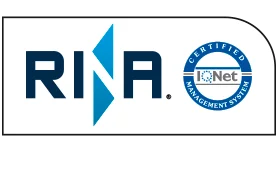WHAT DOES A FLEXIBLE CABLE LOOK LIKE?
 |
|---|
FLEXIBLE CABLE
Flexible cables are popularly known as cables for use in civil construction, having 1 kV and 750 V versions, and according to Brazilian standards they are constructed in class 5, but there are also other types of cables called flexible cables where they are applied in constant movement systems. , such as cranes, cable chains, etc., being more difficult to suffer damage in these applications because they can be twisted and bent, in addition to being able to be used in places where there is the effort of repetitive movement.
One of these types is flexible cable that can be used in elevators, overhead cranes and many other places. Made with a bare copper conductor, its insulation differs depending on use, one of the insulations used is PVC and other special elastomeric compounds.
When flexible cable is used in cable trays, it is packaged in rolls and coils, in addition, the insulation is made with special compounds for mobile applications.
It is very important that the cables are manufactured in accordance with technical standards, this will ensure that the purchased product, such as the flexible cable, is made available with a guarantee of safety, an example is the standard that defines that the flexible cable for elevators be resistant to flames and another that defines that it must have great flexibility.
Even though flexible cables are widely used in various sectors, it is very difficult to find a company that sells them with high quality and the necessary security.
Example of FLEXIBLE CABLE FOR USE IN CIVIL CONSTRUCTION:
INNOVCABLE EVOLUFLEX CABLE 0.6/1kV HEPR/PVC 90°C
APPLICATION: – Used as power cables for fixed installations, recommended in circuits that require greater flexibility cables for electrical energy supply and distribution circuits in residential, commercial, industrial buildings, transformer substations, etc. They are intended for general installations in outdoor conduits (on trays, shelves or similar supports), profiles, construction spaces, as well as in underground systems, of the duct bank type or directly buried.
– Due to the high operating temperature of the conductor, obtained through thermoset insulation, this cable has a greater current capacity when compared to cables with conventional thermoplastic insulation.
The polyvinyl chloride (PVC) covering has excellent resistance to abrasion and a low coefficient of friction, allowing low cost, simple and safe installation, having non-propagation and flame self-extinguishing characteristics, in accordance with NBR NM-IEC 60332-1
1-) Conductor: copper, soft temper, high flexibility, class 5 stringing, according to NBR NM 280;
2-) Insulation: HEPR 90°C, thermoset compound meeting the NBR 6251 standard for the HEPR type (EPR/B).
3-) Cover: polyvinyl chloride, meeting the physical requirements of NBR 6251, for type ST2.
Note: When necessary, polyvinyl chloride (PVC) padding will be applied to multi-core cables, with a helical application of polyester tape.
A-) Mechanical characteristics:
– Good Mechanical resistance to impacts
– Good Cable flexibility
B-) Usage characteristics
-Ambient temperature (min/max): -5 / 60°C
– Flame resistance: IEC 60332-1
– Min radius . of curvature: 8 (xD)
Applicable Specifications: IEC 60332-1, ABNT NBR 6251, ABNT NBR NM 280, ABNT NBR 7286.
Here are some flexible cable models for other applications:
INNOVCABLE PVC JZ/OZ CY TINY
INNOVCABLE PVC JB/OB
INNOVCABLE PVC JB/OB YCY
INNOVCABLE PVC JB/OB YSY
INNOVCABLE PVC JZ/OZ
INNOVCABLE PVC JZ/OZ YCY
INNOVCABLE PVC JZ/OZ CY
INNOVCABLE PVC JZ/OZ YSY
INNOVCABLE PVC JZ/OZ BLACK
INNOVCABLE PVC JZ/OZ-YCY BLACK
INNOVCABLE INNOVTRONIC-OZ EB LIYY-OZ
INNOVCABLE INNOVTRONIC-OZ-CY EB LIYCY-OZ
What is it? Other types…
Related Cables
FLEXIBLE CABLE - MOVFLEX ALLROUND DRAG CHAINS SK-C-PUR-AC
FLEXIBLE CABLE - PVC FLAT YCFLY, YFLCY, KYCFLY, KYFLCY (EMV)
FLEXIBLE CABLE - FESTFLEX (N) GRDGCGÖU (C)-FC (EMV)
Main cities and regions in Brazil where Innovcable serves Flexible Cable:
“Through our central office in São Paulo, we serve”
“Through our central office in São Paulo, we serve”
“Through our center in Rio de Janeiro, we serve”
“Through our center in Rio de Janeiro, we serve”
“Through our central office in São Paulo, we serve”
“Through our center in Rio de Janeiro, we serve”
“Through our center in Rio de Janeiro, we serve”
“Through our center in Rio de Janeiro, we serve”
“Through our central office in São Paulo, we serve”
“Through our central office in São Paulo, we serve”
“Through our central office in São Paulo, we serve”
“Through our central office in São Paulo, we serve”
“Through our central office in São Paulo, we serve”
“Through our central office in São Paulo, we serve”
“Through our central office in São Paulo, we serve”
“Through our central office in São Paulo, we serve”
“Through our center in Rio de Janeiro, we serve”
“Through our center in Rio de Janeiro, we serve”
“Through our center in Rio de Janeiro, we serve”
“Through our central office in São Paulo, we serve”
“Through our central office in São Paulo, we serve”
“Through our central office in São Paulo, we serve”
“Through our center in Rio de Janeiro, we serve”
“Through our center in Rio de Janeiro, we serve”
“Through our central office in São Paulo, we serve”
“Through our central office in São Paulo, we serve”


































